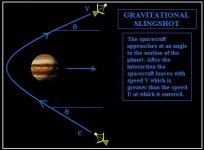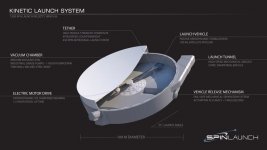Perhaps it would be possible to carefully dismantle Ganymede and put most of it on "standby", get down to the iron core and get that moving towards Mars.
Would it be possible to crack open Mars a bit?
After the core has been "transplanted" the other materials could be sent in a controlled manner to rebuild a new and more suitable planet.
Should not be more far fetched than other some plans?
Much better than dooming a lot of people to forever live in low gravity.
The gravity and mass density of both Mars and Ganymede is relatively low, but put together into a new planet it would be much more suitable. We're still a bit off in terms of gravity, not sure where we could get more iron from.
Edit:
For moving materials to and from planets with a specific gravity, perhaps we could make a "slingshot" using high tensile strength fiber wire of some sort, and big weights that are lifted up slowly using a little bit of energy over longer time. When they have been lifted to the right position a basic electro magnet can hold it in place while the gears and lifter motors are disconnected, countdown to cut power on the magnet. Acceleration should be steady if the wire is tight, and the spacecraft would be shot out at an angle (not directly up), after a successful launch the spacecraft would engage engines and steer in the desired direction.
Edit2:
Another version could perhaps be a huge blowtube like a a bastard mix between a potato gun and the vacuum tube trains.
Would it be possible to crack open Mars a bit?
After the core has been "transplanted" the other materials could be sent in a controlled manner to rebuild a new and more suitable planet.
Should not be more far fetched than other some plans?
Much better than dooming a lot of people to forever live in low gravity.
The gravity and mass density of both Mars and Ganymede is relatively low, but put together into a new planet it would be much more suitable. We're still a bit off in terms of gravity, not sure where we could get more iron from.
Edit:
For moving materials to and from planets with a specific gravity, perhaps we could make a "slingshot" using high tensile strength fiber wire of some sort, and big weights that are lifted up slowly using a little bit of energy over longer time. When they have been lifted to the right position a basic electro magnet can hold it in place while the gears and lifter motors are disconnected, countdown to cut power on the magnet. Acceleration should be steady if the wire is tight, and the spacecraft would be shot out at an angle (not directly up), after a successful launch the spacecraft would engage engines and steer in the desired direction.
Edit2:
Another version could perhaps be a huge blowtube like a a bastard mix between a potato gun and the vacuum tube trains.
Last edited:
There really ought to be a way to move materials around the Solar System without expending energy. Just that it's quite a fierce Physics problem. 
Presumably as long as you are moving downhill in the Sun's gravity well you gain energy. But it's not that simple. You'd think a probe to Mercury is going downhill, but actually you need enough rocket power to match the escape velocity of the Solar System. Which is why missions to Mercury are rare.
In atoms, the "orbiting" electron can spontaneously drop to a lower level, like 2p to 1s. Strangely 2s to 1s is forbidden for angular momentum reasons that always confuse me:
Hydrogen atom - Wikipedia
Blue Sky thinking, but maybe we need a sort of Space Elevator that can balance out some of the forces. I am thinking of a belt drive like a Van de Graaf generator.
Van de Graaff generator - Wikipedia
I am a terrible brag sometimes, but I once fixed one of these things with a sellotape belt after the rubber one perished. Thing hadn't had a run for about 20 years, a dusty relic, so I was fascinated.
Cost my College about £1,000 in electrostatic damage causing strange random crashes in the upstairs computer centre and a wasted afternoon for the guys in White coats who worked therein. They spent the afternoon in the coffee bar having failed to fix the problem.
But I can honestly say I reached 1 Mev ( 5% lightspeed with protons, or near lightspeed with electrons... ) in the basement Physics lab. Big sparks that day.
I had to agree to fix a date up with one of my girlfriend's luscious friends for the smart computer guy, Clyde, who figured out who the culprit was, to keep him quiet. I was the usual suspect when the College blacked out or the fire alarm went off. He kept schtumm, bless him. My career was saved again. Don't know how his date went.
Presumably as long as you are moving downhill in the Sun's gravity well you gain energy. But it's not that simple. You'd think a probe to Mercury is going downhill, but actually you need enough rocket power to match the escape velocity of the Solar System. Which is why missions to Mercury are rare.
In atoms, the "orbiting" electron can spontaneously drop to a lower level, like 2p to 1s. Strangely 2s to 1s is forbidden for angular momentum reasons that always confuse me:
Hydrogen atom - Wikipedia
Blue Sky thinking, but maybe we need a sort of Space Elevator that can balance out some of the forces. I am thinking of a belt drive like a Van de Graaf generator.
Van de Graaff generator - Wikipedia
I am a terrible brag sometimes, but I once fixed one of these things with a sellotape belt after the rubber one perished. Thing hadn't had a run for about 20 years, a dusty relic, so I was fascinated.
Cost my College about £1,000 in electrostatic damage causing strange random crashes in the upstairs computer centre and a wasted afternoon for the guys in White coats who worked therein. They spent the afternoon in the coffee bar having failed to fix the problem.
But I can honestly say I reached 1 Mev ( 5% lightspeed with protons, or near lightspeed with electrons... ) in the basement Physics lab. Big sparks that day.
I had to agree to fix a date up with one of my girlfriend's luscious friends for the smart computer guy, Clyde, who figured out who the culprit was, to keep him quiet. I was the usual suspect when the College blacked out or the fire alarm went off. He kept schtumm, bless him. My career was saved again. Don't know how his date went.
Last edited:
After I blew up a £2000 wirewound 2H solenoid in some dumb experiment with magnetic fields, by retiring to the coffee bar whilst it did its thing and overheated, it resulted in letting a lot of the smoke out, Professor Rice-Evans, a cool guy who looked like Sir. Lancelot Spratt, told me not to worry, 
A good Physics experiment, quoth he, cost Millions.
The smoking gun on my involvement in the Van De Graaf Generator fiasco, was that I was running a Hewlett-Packard graph plotter on the dull Mossbauer effect - Wikipedia.
When I came back from the Coffee Bar to see how it turned out, I found huge spikes in the plot everytime I sparked up the Van De Graaf. It actually gave an exact timing on my sparks, which happened to coincide with the exact times when the computers crashed.
Mea Culpa. Actually I had more expensive disasters. But all good fun.
TBH, most of the other Science Departments had more to be ashamed of.
A good Physics experiment, quoth he, cost Millions.
The smoking gun on my involvement in the Van De Graaf Generator fiasco, was that I was running a Hewlett-Packard graph plotter on the dull Mossbauer effect - Wikipedia.
When I came back from the Coffee Bar to see how it turned out, I found huge spikes in the plot everytime I sparked up the Van De Graaf. It actually gave an exact timing on my sparks, which happened to coincide with the exact times when the computers crashed.
Mea Culpa. Actually I had more expensive disasters. But all good fun.
TBH, most of the other Science Departments had more to be ashamed of.
I'm not sure action and reaction helps a lot here.
I don't make this College stuff up.
I just looked up Professor Peter Rice-Evans:
A good man. Got me out of a few scrapes. Notable for wearing waistcoats and bow ties. A bit of a ladies man I suspect.
I don't make this College stuff up.
I just looked up Professor Peter Rice-Evans:
Royal Holloway 2012 said:ANNOUNCEMENTS:
To note that Professor Peter Rice-Evans BSc, PhD, DSc (London), MBA (Columbia) died on 21 February. Peter was Lecturer, Bedford College (1962-78), Reader in Experimental Physics, Bedford College (1978 – 88), Professor of Experimental Physics, RHBNC (1988 – 99). Peter was noted for his contributions on the College Council and Academic Board. He remained active as Emeritus Professor and Leverhulme Fellow and contributed to the book Bedford College: Memories of 150 Years
A good man. Got me out of a few scrapes. Notable for wearing waistcoats and bow ties. A bit of a ladies man I suspect.
If you want to move big bodies in the solar system around or into different orbits you have to think 100-200 million yrs.
It will require a lot of planning (computer simulation etc) and enough energy to get reasonably large body moving - say something the size of Phobos. You use that to perturb the orbit of a bigger object etc and you then bootstrap the process up until you are able to shift something like the Earth at 6.6^23 metric tons.
We are probably not ready to do something like this for another few millennia (think of the computational issues catering for eventualities for example) and maybe we only have the technology for the initial move in say 100k yrs. However, if we are serious about making the planet habitable beyond the 200 million yrs we have left, then as a species, we will have to make a start in the next million yrs or so.
That said, it might be easier to terraform something like Mars, Ganymede or Titan - insurance policies.
It will require a lot of planning (computer simulation etc) and enough energy to get reasonably large body moving - say something the size of Phobos. You use that to perturb the orbit of a bigger object etc and you then bootstrap the process up until you are able to shift something like the Earth at 6.6^23 metric tons.
We are probably not ready to do something like this for another few millennia (think of the computational issues catering for eventualities for example) and maybe we only have the technology for the initial move in say 100k yrs. However, if we are serious about making the planet habitable beyond the 200 million yrs we have left, then as a species, we will have to make a start in the next million yrs or so.
That said, it might be easier to terraform something like Mars, Ganymede or Titan - insurance policies.
You might want to review Newton's Third Law of Motion before you get too far along on that space slingshot.
Isn't it enough to just have two slingshots firing in opposite directions?
Must be much easier than making some silly space elevator (good luck!), or using fuel for the initial acceleration where it is less effective per distance travelled.
Edit:
In case you missed it I was thinking about how to launch spacecraft from planets, it was not about travelling from one location to the next in space.
Last edited:
The type of 'slingshot' currently employed for moving objects around the solar system is the 'gravitational slingshot'.For moving materials to and from planets with a specific gravity, perhaps we could make a "slingshot" using high tensile strength fiber wire of some sort...
I like your idea of a giant catapult though. Newton 3 would not be a problem provided the payload was of small mass.
Attachments
The Web Between the Worlds - WikipediaPerhaps it would be possible to carefully dismantle Ganymede and put most of it on "standby", get down to the iron core and get that moving towards Mars.
Would it be possible to crack open Mars a bit?
After the core has been "transplanted" the other materials could be sent in a controlled manner to rebuild a new and more suitable planet.
Should not be more far fetched than other some plans?
Much better than dooming a lot of people to forever live in low gravity.
The gravity and mass density of both Mars and Ganymede is relatively low, but put together into a new planet it would be much more suitable. We're still a bit off in terms of gravity, not sure where we could get more iron from.
Edit:
For moving materials to and from planets with a specific gravity, perhaps we could make a "slingshot" using high tensile strength fiber wire of some sort, and big weights that are lifted up slowly using a little bit of energy over longer time. When they have been lifted to the right position a basic electro magnet can hold it in place while the gears and lifter motors are disconnected, countdown to cut power on the magnet. Acceleration should be steady if the wire is tight, and the spacecraft would be shot out at an angle (not directly up), after a successful launch the spacecraft would engage engines and steer in the desired direction.
Sheffield and Clarke ("The Fountains of Paradise") describe the "space elevator" the same year in different novels (remarkable, but the idea of a big cable into space had already been around for a while), but Sheffield went further to describe the space slingshot. This review describes it but it didn't get it quite right.
amazon.com/gp/customer-reviews/R1MBEU79I4XR4W/ref=cm_cr_dp_d_rvw_ttl?ie=UTF8&ASIN=1522684956
A Goodreads review mentioned "Uplift" which is, as I recall, this same ludicrous slingshot thing except that one end dips down into the atmosphere and touches Earth (presumably at the same speed and direction as Earth's rotation), and that's the moment you attach to the end and get lifted into Earth orbit ...
The slingshot is a long (miles long?) fast-rotating super-high-strength cable with weights at the ends (many times the weight of the ship you want to "launch" from it) spinning, and also in orbit around a planet. Your ship attaches to the center then goes down the length in either direction. At the end you're going around in a circle at substantial speed. At the moment you're going the direction you want to go (simplifying, gravitational effects will change your direction), you release from the cable and go to another planet where there's a similar slingshot. You aim and time things carefully so you line up with and attach to the new slingshot where it happens to be moving tangent to your path. You go down to the center of the cable and you're there in orbit around the other planet, or L5 or wherever. "Launching" slows down a slingshot and "landing" speeds it up, but with two-way traffic there's no net energy loss.
I'm sure there's a better description in the novel, but then it's been decades since I read it. Googling space slingshot doesn't find Sheffield's idea, but rather brings up descriptions of gravitational assist using planetary flyby, which is also interesting (used by NASA for deep-space probes and apparently what the reviewer thought it was), and also this ludicrous-but-true bizarre thing called Spinlaunch:
SpinLaunch is building a gigantic centrifuge to launch satellites into orbit
If you want a better description of Sheffield's slingshots, all I can suggest is read the novel.
There's this (or several?) "Smarter Every Day" episode, maybe on golf balls or baseballs, I forget. They've got this tube they use as a gun barrel. They seal up the exit end with a thin plastic, then vacuum out the air and fire it off. The projectile accelerates to something greater than Mach 1 and bursts through the plastic film like it's not there. It's a good Youtube channel, I should watch more of it.Edit2:
Another version could perhaps be a huge blowtube like a a bastard mix between a potato gun and the vacuum tube trains.
Last edited:
That SpinLaunch concept is worthy of illustration.
It's correct that Arthur C. Clarke was not the first person to think of a space elevator or orbital tower.
However, he was responsible for introducing the concept to a far larger audience in his book 'The Fountains of Paradise'.
It's correct that Arthur C. Clarke was not the first person to think of a space elevator or orbital tower.
However, he was responsible for introducing the concept to a far larger audience in his book 'The Fountains of Paradise'.
Attachments
Quite a dull fortnight in Space, IMO. 
Microbes on Venus, Saline Lakes below the South Pole of Mars (er, Barsoom surely...ed).
Now if NASA told me I was onto a "Gravity" mission into Space with Miss. Congeniality Herself Sandra Bullock, I might overciome my severe hatred of heights:
Gravity Official Main Trailer (2013) - Sandra Bullock, George Clooney Movie HD - YouTube
Incredibly, this really happened next year:
The Elusive Peril of Space Junk | The New Yorker
Massively long article. The guys on the ISS asked what the closing velocity of the Space Junk was? 14 km/s! NOT GOOD. They decided to have a good dinner and retire to the boring but solid Soyuz escape pod. After all, they didn't know when they were getting their next dinner.
I think they made it. But a worrisome moment.
Microbes on Venus, Saline Lakes below the South Pole of Mars (er, Barsoom surely...ed).
Now if NASA told me I was onto a "Gravity" mission into Space with Miss. Congeniality Herself Sandra Bullock, I might overciome my severe hatred of heights:
Gravity Official Main Trailer (2013) - Sandra Bullock, George Clooney Movie HD - YouTube
Incredibly, this really happened next year:
The Elusive Peril of Space Junk | The New Yorker
Massively long article. The guys on the ISS asked what the closing velocity of the Space Junk was? 14 km/s! NOT GOOD. They decided to have a good dinner and retire to the boring but solid Soyuz escape pod. After all, they didn't know when they were getting their next dinner.
I think they made it. But a worrisome moment.
There's been a lot of discussion regarding the accuracy of the Physics in the film 'Gravity'.
All I can say is - it's a work of fiction - not a documentary!
Then again, I'll happily watch Darth Vader's TIE Fighter whoosh noisily around in space as if it was an aircraft flying in an atmosphere!
All I can say is - it's a work of fiction - not a documentary!

Then again, I'll happily watch Darth Vader's TIE Fighter whoosh noisily around in space as if it was an aircraft flying in an atmosphere!
I suppose this is a good place to start, and I think it's a less-than-4-hour read. TL;DR he's making bold claims about the discovering the fundamentals of physics:
Finally We May Have a Path to the Fundamental Theory of Physics… and It’s Beautiful—Stephen Wolfram Writings
Finally We May Have a Path to the Fundamental Theory of Physics… and It’s Beautiful—Stephen Wolfram Writings
My YouTube attention span is typically only 4 minutes!That's over 4 hours long.

- Status
- Not open for further replies.
- Home
- Member Areas
- The Lounge
- What is the Universe expanding into..




